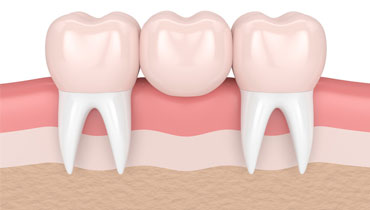What is dental bridge? A dental bridge is designed to replace one or more missing tooth. A bridge is cemented or bonded into place, which means it is non-removable and it should be taken good care with proper oral hygiene. Usually, dental bridge is affiliated with the tooth adjacent to the missing gap. The procedure can treat several gaps in one sitting. Based on reports, dental bridges are perfect alternative to removable partial dentures. However, it would depend on the number of missing teeth and the teeth on the other side and its strength.
The material used depends on whether aesthetics is of concern, whether you need more support or strength and what not. If you are looking to replace teeth in the front, in the smile zone, then you typically want something more aesthetic; zirconia, porcelain. But if you are looking to replace teeth in the back.

Yes, our bridges are safe, but there are things you need to consider. When the 24 hour dentist office designs a bridge, they have to prepare the anchoring teeth or abutments in order to get a minimal thickness which allows them to fabricate a bridge that is strong and doesn’t break on you in the future. It means they have to drill some perfectly healthy teeth in order to make the bridge work and that is something you really have to think about. And for you to get a successful bridge, you need at least two healthy teeth in the area between the missing teeth.
The first thing that needs to be evaluated, is the strength of these anchoring teeth. If these teeth have a crown on them or they have a root canal on them or they have a large filling on them, they may not be strong enough to support the occlusal forces or bite forces that come into play when you have your bridge in place. What can happen is that if they’re too weak and you cement a bridge onto that weak tooth, that tooth can break and eventually you might lose the bridge altogether. The second thing we need to consider is the length of the bridge. If you have a long spanning bridge that’s replacing multiple missing teeth, then those teeth may not be strong enough to support all those units of missing teeth that you’re replacing. In those cases, some dentist will prefer to do multiple abutments to support all that force that gets distributed on that long spanning bridge.
It’s also best if you talk to your dentist, have some x-rays taken and your teeth asses to see whether this would be appropriate treatment for you.